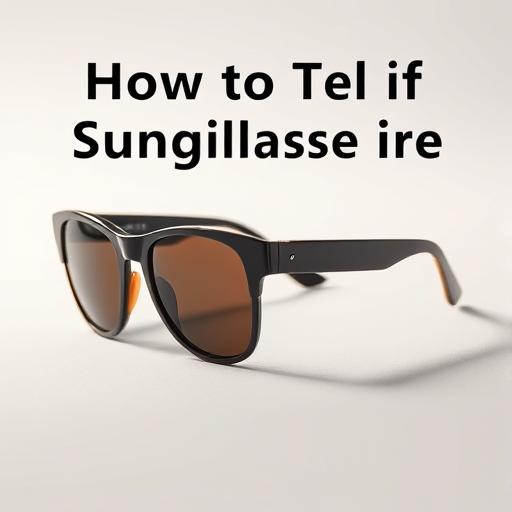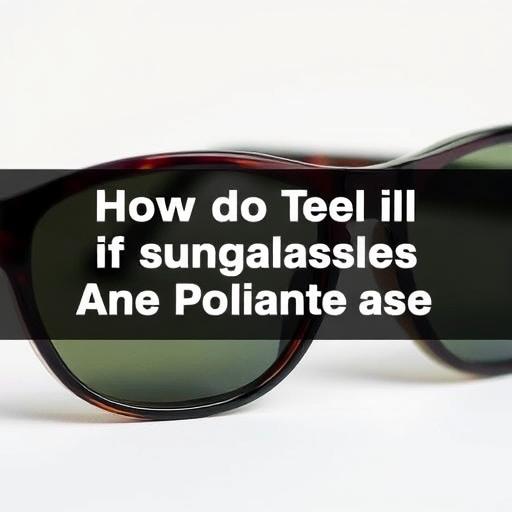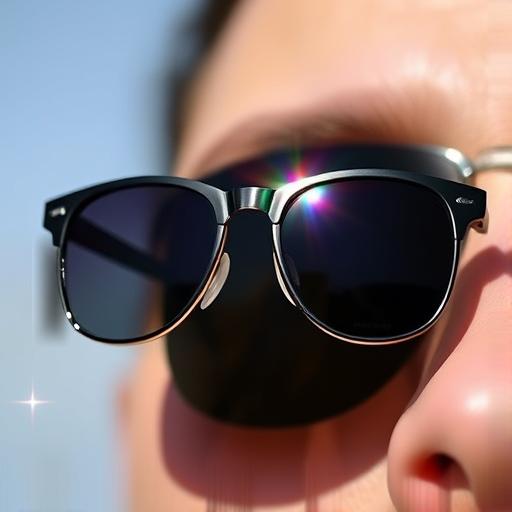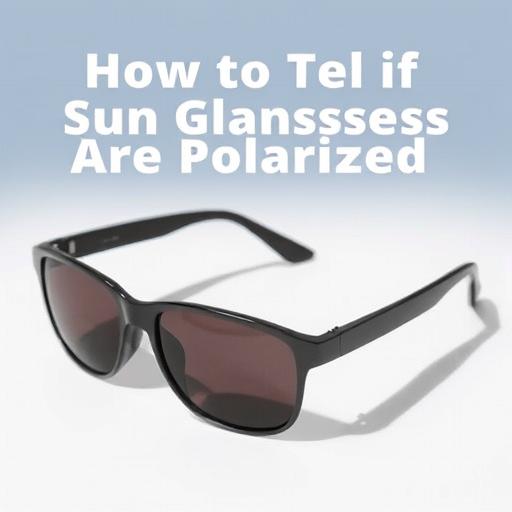How to Tell If Sunglasses Are Polarized

Polarized sunglasses are a popular choice for outdoor enthusiasts due to their ability to reduce glare from reflective surfaces, enhancing visual clarity and comfort. Whether you’re driving, boating, or hiking, knowing how to identify polarized lenses ensures you’re investing in quality eyewear that protects your eyes and improves your experience. While some sunglasses clearly state their polarization feature, others may not, leaving room for confusion. This guide provides simple, reliable methods to determine if your sunglasses are polarized, helping you make informed decisions and avoid misleading claims.
Check for Polarization Labels and Certifications
The easiest way to confirm if sunglasses are polarized is to look for explicit labels on the lenses or frames. Manufacturers often mark polarized lenses with terms like “Polarized,” “Polarized Plus 2,” or “Polarized UV400,” indicating both polarization and UV protection. Some brands use proprietary names, such as “Polarized Impact” or “Polarized Blue,” which serve the same purpose. Always read the product label carefully before purchasing.

Look for Certifications
Reputable polarized sunglasses usually carry third-party certifications like ANSI Z80.3 (American National Standards Institute) or ISO 12312-1 (International Organization for Standardization). These standards ensure the lenses meet safety and quality benchmarks. Additionally, check for UV400 or “100% UV protection” labels, which are critical for blocking harmful ultraviolet rays—polarization alone does not guarantee UV safety.
What to Do If There’s No Label
If your sunglasses lack a label, consult the packaging or brand website. Some retailers use vague terms like “polarized filter” or “anti-glare,” which may not mean full polarization. Be cautious of unverified claims and prioritize brands that provide clear, detailed product information.
Perform the Reflection Test
A quick hands-on test can reveal whether sunglasses are polarized. Start by holding them over a reflective surface like water, glass, or a shiny car hood. If the lenses are polarized, they should dim or eliminate the glare significantly. This works best in bright light conditions where reflections are pronounced.
Rotate the Lenses
Tilt the sunglasses 90 degrees while looking at the reflective surface. Polarized lenses will alter the way glare is blocked, causing reflections to change in intensity or disappear entirely. This happens because polarization filters light waves in a specific direction, and rotating the lenses disrupts this alignment.
Test on a Digital Screen
Position the sunglasses over a smartphone or computer screen in a well-lit room. Rotate the lenses, and if they are polarized, the screen will appear to darken or lighten at certain angles. This occurs because most screens emit polarized light, which interacts with the lenses during the rotation.
Use a Known Polarized Source for Comparison
If you have another pair of polarized sunglasses, you can use them as a reference. Hold both pairs together and rotate one relative to the other. Polarized lenses will create a darkening effect when aligned, similar to tinted windows in airplanes or cars. This method is simple and effective for in-person comparisons.
Look for the “Rainbow Effect”
Some reflective surfaces, like non-tempered glass or car windshields, may display a faint rainbow-like pattern when viewed through polarized lenses. While this is not a foolproof test, it can serve as a hint that the lenses are polarized. The effect is subtle and may not appear on all materials.

Use a Polarizing Filter (Advanced Method)
For a more precise test, borrow a polarizing filter from a photography store or camera lens. Hold it against the sunglasses lens and rotate the filter. If the lenses are polarized, light passing through will dim or brighten depending on the angle of the filter. This technique is ideal for verifying authenticity, especially for high-end or vintage sunglasses.
Examine the Lenses for Polarized Features
Polarized lenses often have a distinct appearance. Hold them up to a bright light and tilt them at an angle. You might notice fine horizontal lines, a sign of the polarization film embedded in the lens. Non-polarized lenses, on the other hand, scatter light without such patterns.
Assess Color and Clarity Differences
Quality polarized lenses typically maintain a uniform tint without color distortion. They appear darker and sharper compared to standard tinted lenses, which can sometimes have a greenish or purplish hue. However, this method is subjective and best used alongside other tests.
Feel the Lens Construction
Polarized lenses are usually thicker or layered to accommodate the polarization film. If the lenses feel unusually solid or have a textured layer, this might indicate polarization. Keep in mind, though, that lens thickness varies by design and material, so this isn’t a definitive sign.
Consult the Retailer or Manufacturer
When in doubt, reach out to the retailer or brand directly. Ask for confirmation about polarization and UV protection, and request a return policy if the product isn’t as advertised. This is especially important for online purchases where physical testing isn’t possible.
Contact Customer Service
Most brands provide contact information or live chat support to address product inquiries. If the description is unclear, ask for details to verify if the lenses are polarized. A trustworthy brand will be transparent about their features.
Return for Verification
For high-cost or specialty sunglasses, return them to the store for an in-person check. Retailers may use tools like polarimeters or demonstrate the reflection test. This step ensures you’re getting the performance you paid for.

Ask for a Quick Test in-Store
If shopping locally, don’t hesitate to ask staff to test the sunglasses against a reflective surface or screen. Many retailers are happy to assist, as it helps you make a confident purchase.
Understanding the Importance of Polarized Lenses
Polarized lenses block horizontal glare caused by light bouncing off flat surfaces like water, roads, or snow. This reduces eye strain and improves visibility, making them essential for activities where glare is common. Unlike standard tinted lenses, polarization doesn’t just darken the view—it actively filters out harmful light reflections.
Glare Reduction and Eye Comfort
Glare can cause discomfort, headaches, and even temporary blindness in bright conditions. Polarized lenses combat this by absorbing the scattered light, providing clearer vision and a more comfortable experience. This is why they’re favored by drivers and water sports enthusiasts.
UV Protection vs. Polarization
Comparison table for UV Protection vs. Polarization
While polarization reduces glare, UV protection shields your eyes from ultraviolet radiation. A lens labeled “UV400” blocks rays up to 400 nanometers, protecting against both UVA and UVB. Always ensure your sunglasses offer both features for comprehensive eye health.
Visual Clarity and Safety
By minimizing glare and enhancing contrast, polarized lenses improve depth perception and reduce fatigue. This is particularly valuable for tasks like driving, where visibility is crucial, or fishing, where spotting fish underwater is easier with reduced surface reflections.
Conclusion: Final Tips for Choosing Polarized Sunglasses
Confirming whether sunglasses are polarized doesn’t have to be complicated. Use labels, certifications, reflection tests, and comparisons to verify their authenticity. Always check for UV400 protection alongside polarization to ensure your eyes remain safe from both glare and harmful rays. Before purchasing, especially online, test the lenses in-store or request a return if the claims don’t hold up. Prioritize quality and clarity for activities where visual comfort matters most.
FAQ: Common Questions About Polarized Sunglasses
- How can I tell if my sunglasses are polarized without a label?
- Are all polarized sunglasses labeled as such?
Use the reflection test on water or glass, or try rotating them over a digital screen to see if the light dims.
No. Some use terms like “anti-glare,” which can refer to non-polarized coatings. Always cross-check with other methods.
Yes. Hold the sunglasses over the screen and rotate them—if the display darkens, the lenses are likely polarized.
For activities involving glare, such as driving or boating, the investment in polarized lenses significantly boosts comfort and safety.
Polarization reduces glare but doesn’t guarantee UV protection. Look for “UV400” or “100% UV” labels to confirm full sun protection.
